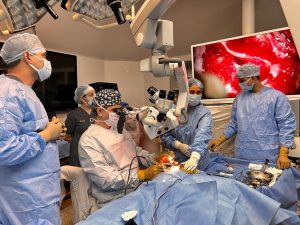Smart Hospitals to deploy over 7 million internet of medical things devices globally by 2026


NEW DELHI: A new study by Juniper Research has found that smart hospitals will deploy 7.4 million connected IoMT devices globally by 2026; over 3,850 devices per smart hospital. This global figure represents total growth of 231% over 2021, when 3.2 million devices were deployed.
The concept of the IoMT involves healthcare providers leveraging connected devices such as remote monitoring sensors and surgical robotics to improve patient care, staff productivity, and operational efficiency.
The research identified smart hospitals in the US and China as leading the global adoption of IoMT devices; accounting for 21% and 41% of connected devices respectively, by 2026. It highlighted digital healthcare initiatives implemented during the ongoing pandemic and high levels of existing digitalisation within healthcare infrastructure as key to these countries’ leading positions.
For more insights, download our free whitepaper: Smart Hospitals: Using Big Data to Enhance Healthcare Delivery
Collaboration With Network Operators Crucial to Delivery of Remote Services
The new report, Smart Hospitals: Technologies, Global Adoption & Market Forecasts 2021-2026, identified remote monitoring as key to delivering smart hospital services. It analysed how adoption of remote monitoring technologies accelerated during the pandemic significantly, due to difficulties associated with delivering in-person healthcare. This accelerated adoption is set to continue over the next five years, as patients become acclimatised to remote monitoring and benefit from proactively managing and treating health conditions.
However, it identified that the real-time nature of remote monitoring requires low latency, high bandwidth connections to ensure transmission of patients’ health data is not interrupted or distorted. As a result, it encourages smart hospital vendors to develop partnerships with network operators to leverage multi-access edge computing to drive major reductions in lag and latency.
Research author Adam Wears explained: “The emergence of remote monitoring within healthcare presents an opportunity for network operators to place themselves within the digital healthcare value chain. Smart hospital technologies generate significant quantities of data, meaning that the edge computing function provided by network operators will be crucial to the successful roll-out of these systems.”




